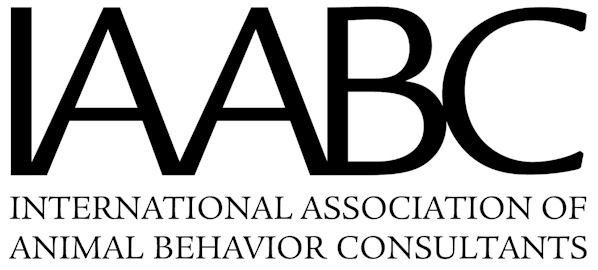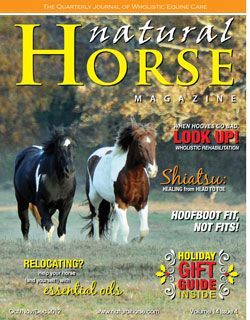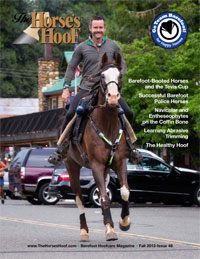WEIGHT LOSS and WINTER
Gwenyth Browning Jones Santagate
Copyright 2011. All Rights Reserved.
Question from local forum:
“Last winter my horse lost a bit of weight, and I have brought her back up over the summer but I am worried about her losing it again over the winter (she has not gained all that she lost either).
I board her and she gets 2 coffee cans of a mix of pellets and sweet feed (regular size coffee can). I do not want to change the kind of feed she is getting, just maybe add something else to it. (this is what the barn owner feeds everyone) I want something that will add weight but I do not want to add to much energy to her either. Can anyone give me some help? Was thinking beet pulp or hay stretcher pellets, or a high fat, low energy pellet? Also, is too much protein in the diet bad? Thanks for any advice as I worry about her, she is 17 years old.”
——————————————————————————————————-
I’d like to address this but do so in such a way that many horse owners can benefit from the information. I will address it sentence by sentence.
First of all, losing weight in the winter is NOT something to ‘expect’ but something that does happen when the temperatures drop and the horse utilizes more calories just to keep warm than what he or she was using in the warmer seasons. A horse, being a hay burning furnace, creates and maintains body heat two ways. One is by digesting FORAGE and the other is with movement. A stabled horse, with limited room to move and the typical ‘two flakes in the AM and two flakes in the PM” is NOT going to be able to maintain weight unless either the forage given is increased or allowed to move at will in order to create body heat. “Two flake AM and two flakes PM” is not a suitable arrangement for feeding the horse. First of all, bales are made differently according to each hay producer. Two flakes could weigh a total of 4 pounds or 10 pounds. A horse at maintenance, one that is not ‘in work’, requires an average of 2 pounds of TOTAL feed per every 100# of weight just to keep in constant state of weight. Ideally, all of that total daily feed would be forage as that is what the horse is created to eat! So, figure if the horse were eating nothing but hay, at 1000#, that horse would need a minimum of 20# of hay a day just to be maintained. Obviously 2 flakes AM and PM at 2# per flake is not going to meet the horse’s requirements. That would only be a total of 8# of food a day for a horse that requires 20# daily. So, its only common sense that the horse is going to lose weight BUT ….
The horse is also getting 2 coffee cans of a mix of pellets and sweet feed a day. OK … well, pellets weigh an average of 1.40# per quart and sweet feed weighs an avg of 1.25# per quart. Extruded pellets weigh only .60# per quart! Is the ‘coffee can’ one quart? Two quarts? How BIG is the coffee can and how much does the mixture WEIGH per can? But let’s just say that the coffee cans are true quarts and the pelleted and sweet mix weigh 1.3# per quart. So, in addition to the possible 8# of hay given daily the processed feed given only adds another 5.2# for the day so that gives a total of 13.2# of feed daily! For a 1000# horse that’s 6.8# LESS than the horse needs just for maintenance.
Now, a good rule of thumb, for colder temperatures in the winter time is to add 1# of hay for every 10 degree Farenheit drop below 35. That will just make up the calories the horse burns to maintain body heat. If the hay amounts are not increased then the calories will be burned up much faster than the body can keep up with just in keeping warm! So now the deficiency of feed is even less. Thus … a horse that loses weight in the winter time.
So let’s talk about what the ‘natural’ or feral horse eats regularly — can you guess? Yep, forage … and all he wants during the usual 18 hours of eating/grazing he does in a 24 hour period of time. Grasses, leaves, shrubs, trees, weeds, cacti, seaweed, nuts, flowers, fruit, roots — all that might be available in his region of the world. And its all forages. Contrary to common belief of the straggly, scraggly, sick skin and bones ‘mustang’ that many would like for us to believe the feral horses fare very well and are generally in good, healthy condition. They can move and graze as they’d like, they eat forages 18 hours a day, they live in herds for common grooming and touch healing … and they’re healthy! The unhealthy ones don’t live long as they become someone elses’ food. That’s life. That’s the food chain. That’s the way it is. The healthy ones live and thrive in an environment and on a diet for which they were finely created and tuned.
We’re not talking about ferals, though, are we? We’re talking about domestic horses. All the more reason to understand HOW horses are created and what they’re designed to eat – how much, when, etc. If we feed our domestics properly then their bodies will be healthy and able to fight against infections and illnesses just as the healthy mustangs are able to do. But if we don’t feed them properly then their bodies wear down, their immune systems weaken and our domestics suffer more than the ferals do.
So — its imperative that we know how MUCH the feed we’re feeding our horses weigh so we can ensure they’re getting enough food to sustain their body weight.
Now … adding beet pulp or hay stretcher would be a plus to this diet as both are forage HOWEVER, Beet Pulp nowadays is all genetically modified and we truly don’t know, in addition to what consequences there might be long term from this, we also can assume that there are plenty of chemical fertilizers, pesticides and herbicides that have seeped into the root vegetable. Beet Pulp, by definition, is nothing more than what’s left after the sugar beets have been processed. We’ll see in a moment what processing does to live foods to begin with and then we can summarize the nutrition value of the ‘leftovers’.
Hay Stretcher could be a viable choice to add to the diet as it is mostly forage, depending on the manufacturer of said ‘hay stretcher’. One company adds corn, molasses and other ingredients to the hay stretcher pellets while another manufacturer does not and the only ingredients are forages. That sounds good but because it is still processed it is not a healthy choice for our horses except maybe for’treats’.
Let’s see about processed food a bit … and why its not the best choice for healthy foods for *any*one — not even just for our horses.
My first concern with processed food is that it is a CAUSATIVE factor to Insulin Resistance.(1) This is simply because processed foods raise leukocyte levels in the body sometimes to the levels of violent poisoning.(1)(2)(3) Isn’t that enough to raise your concerns? It was to me! Read that again … processed foods raise leukocyte levels that have been shown to be “the overt onset of diabetes.(2) I won’t belabor on these points as I’ve noted references and you, the reader, are encouraged to research on your own and find out more about this.
Secondly, processed foods have NO live enzymes in them. Fresh, live foods are loaded with natural enzymes that are programmed to help the plant matter (forage) break down in the body and to help the body’s own enzymes digest the full nutrientspf the food. Enzymes are destroyed in any heat over 107*F (3) … therefore any processed food is broken down in the body ONLY by utilizing the body’s own enzymes which, when over used, becomes stressed and,literally, depleted.(4) What this means is the gut can no longer digest the food its taking in fully and therefore the body does not get the full complement of nutrients it needs for full health. Sure, all sorts of artificial vitamins and minerals are added INTO processed food to combat this however, artificial means just that — they’re artificial. They just are not the same as ‘natural’ and the body cannot utilize them the same. Something else to consider is when a feed manufacturer states xx% of vitamins per quart or pound, unless the animal is actually fed the amount recommended by the manufacturer then he or she is just not going to get the nutrients as listed on the bag. Oh — so .. no problem you say. Well wait — you’ll go out and purchase a full vitamin supplement to add to the horse’s feed but remember — those are still artificial AND they’re processed! So now what do you have … ?? I’ll let you think on all that and answer that for yourself.
Regarding a high fat/low energy pellet — need I go on about processed feed? High fat is good. But processed high fat is like feeding plastic to the horse (or to ourselves). If fat is to be added I would strongly encourage something that is healthy and can actually benefit the horse’s gut such as Black Oil Sunflower seeds (BOSS) which are high in Omega 6 fats but also all fiber – just what the equine Dr. prescribed! … and to counter balance that, Flax or Chia seed, high in Omega 3’s and 9’s can be added for not only the calorie and fat benefit but also the nutritional benefits. Again, both are forages and can easily be utilized by the horse’s system since they are all forage/fiber. There are 2500 calories per pound in BOSS. BOSS, being high in Omega 6’s, will help with joint issues such as arthritis as Omega 6’s are ‘natural’ anti-inflammatories BUT … in excess and when not balanced properly with Omega 3’s and 9’s, can CAUSE inflammation. So one needs to consider that, as well, and be sure to complement the O6 with O3’s and 9’s.
Cold Pressed natural oils such as Olive Oil or Safflower Oil is a wonderful additive for horses! 1 cup of oil carries 2000 calories. Cold pressed means just that — unprocessed; just pressed. Excellent additive for the equine diet especially when it is infused with such antioxidants as garlic and specific live herbs that will address the individual horse’s needs. Live herbs carry strong medicines and properties … yes, medicines. They should be treated as medicines and those unfamiliar with the particular properties of the individual herbs should always consult with a Certified Equine Herbalist to make sure there are no adverse or even deadly results with the use of any one herb.
Any processed oils are heated and are nothing more than adding liquid plastic to the horse’s diet. Corn oil has long been favored by horsemen but it actually CAUSES inflammation of cells – thus giving the mirage of the horse putting on weight but one would be keen to notice if the oil is omitted from the diet then the horse loses weight dramatically and quickly.
Addressing the question of adding protein to the diet. Well, let’s take a quick look at protein. Protein USED to be believed to add weight to the horse but it has since and recently been found that FAT is more beneficial for this. A mare’s protein averages about 12% in the milk. As horses age they tend to lose the capability to utilize high proteins for beneficial uses. Their livers cannot process high proteins. In youngsters, high protein in the diet is found to cause bone and joint issues. So I’d be very careful about the protein levels of horse’s feeds. If I needed more calories and weight, as is the prime focus of the questioner, I would go with the oils for fat rather than high protein feeds. Given that her horse is 17 years old one could assume that the liver is beginning to grow weary and the horse may not be able to easily use the higher proteins. Since the liver is the cleanser of the blood I’d not like to tax it any more than it already is in the older horse.
So, I guess the final focus would be on what I *would* recommend or do if this were my own horse. Well, I’d do exactly what I did a few years ago. I’d take the horse OFF processed food entirely and feed fresh, live foods to compelment a free-choice diet of excellent hay … all the hay the horse wanted. And … if available, I’d allow for free choice grazing of varied pastures. A pasture with hundreds of species of plant matter is the best choice. Those which are grown for ONE element only, fertilized for nice, lush, green growth of that species of grass, does not allow for the variety of nutrients that are available in a mixture of grasses, weeds, flowers and wild herbs. “Back in the day” there was a saying if a horse was sickly: “Put ‘im out to grass and let ‘im get a bloom on ‘im.” … Horses have eaten and THRIVED on grasses for millions of years. They haven’t changed over all those years. What’s changed? The diet that man has offered and manufactured. Horses have THRIVED on natural flora and forages forever. Grasses, plants, flowers, roots, nuts, seeds — this is what horses are naturally meant to eat. This is what feeds their livers, their kidneys, their immune systems (btw, ferals don’t get vaccines or chemical dewormers either — their natural, healthy immune systems keep them in a state of well-being.) their hooves, their coats, their minds … this is just the way horses are meant to eat. So what can we, with our domestics, do to emulate this? We can feed LIVE, FRESH FOODS — vegetables, fruits, nuts, seeds, varied grasses, high-quality hays,herbs, roots, etc. Allow them to be horses! Let them eat leaves and nuts and bark and paw in the ground for roots.They’re horses. They’re not human kids. What KIND of vegetables, fruits,etc? Well, think of what’s in season and go from there. Right now its pumpkins and squash and sweet potatoes and cole crops … lettuces, greens, turnips, and more. The more colorful, the better. The grass is dying off so the root crops are what are thriving right now. Many vegetables have properties to them that PREVENT insulin issues (think IR/EMS horses) and all of them have specific properties unique to themselves … fresh vitamins, minerals (as the earth allows), enzymes to help digestion …
What more could the horse ask for?
I think if the poster were to read this and add fresh vegetables etc. to the horses diet, allow for FREE choice GOOD quality hay, plus a bit of fat for added calories then she’d find her horse would GAIN the weight needed and begin to shine … literally and figuratively.
If you’d like to read more specifics and other reports then please visit http://www.thepenzancehorse.com and read the ARTICLES section. I think you’ll be a bit surprised by some of the articles there. The article entitled, “Feeding the Horse” gives a BASE live diet to which other vegetables and fruits can be added as available. And please, feel free to contact me with comments or questions: caballus@charter.net. Thank you!
(1) Susan Eastman , Helle Markholst , Deborah Wilson and Åke Lernmark http://www.ncbi.nlm.nih.gov/pubmed/1879302
(2) http://www.thepenzancehorse.com/2011/ARTICLES/LEUKOCYTOSISANDCOOKEDFOOD.doc
(3) http://www.thepenzancehorse.com/2011/ARTICLES/Francis Pottenger Cat Study.odt, http://www.purchon.com/biology/enzymes.htm
(4) http://www.purchon.com/biology/enzymes.htm










